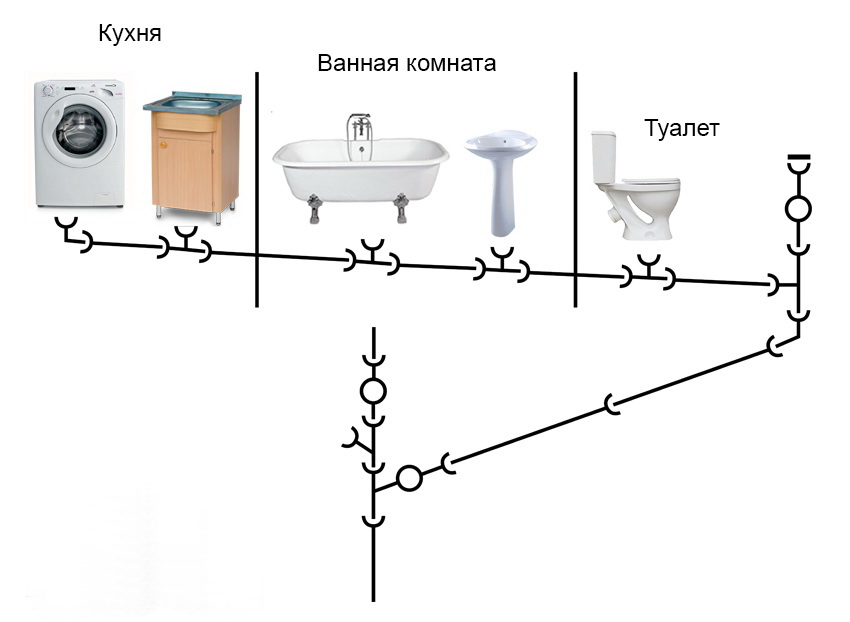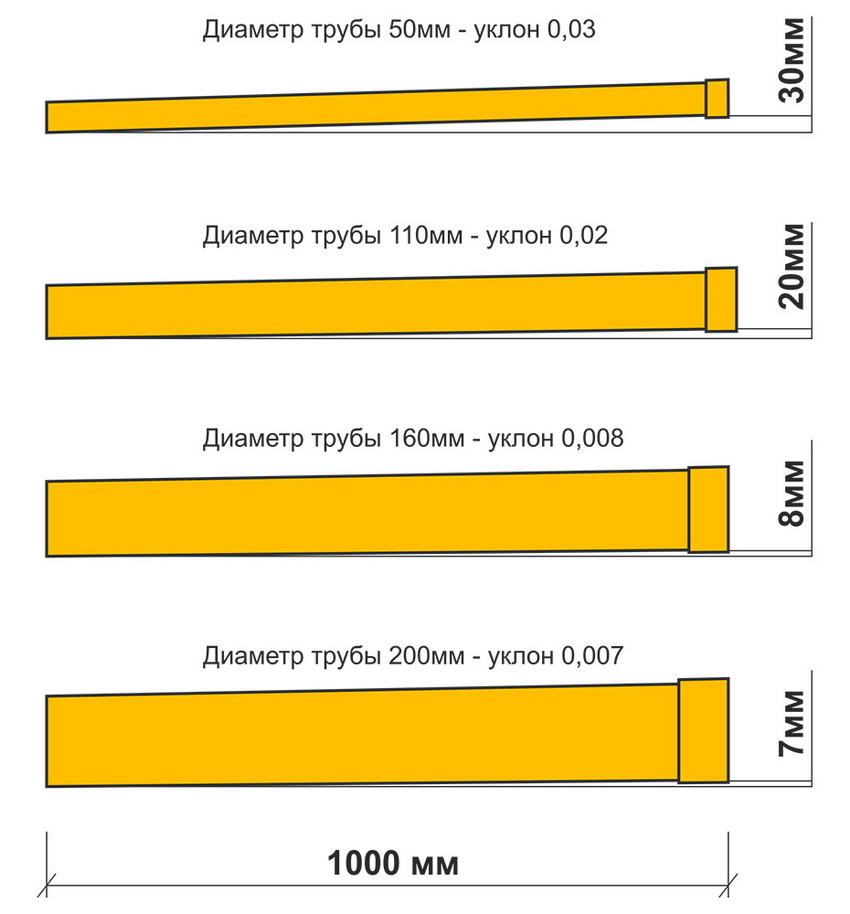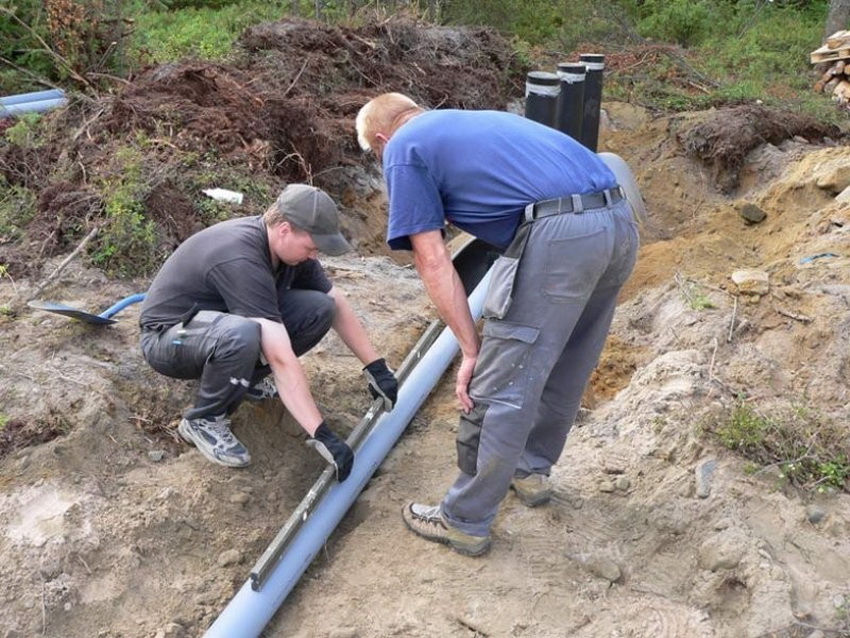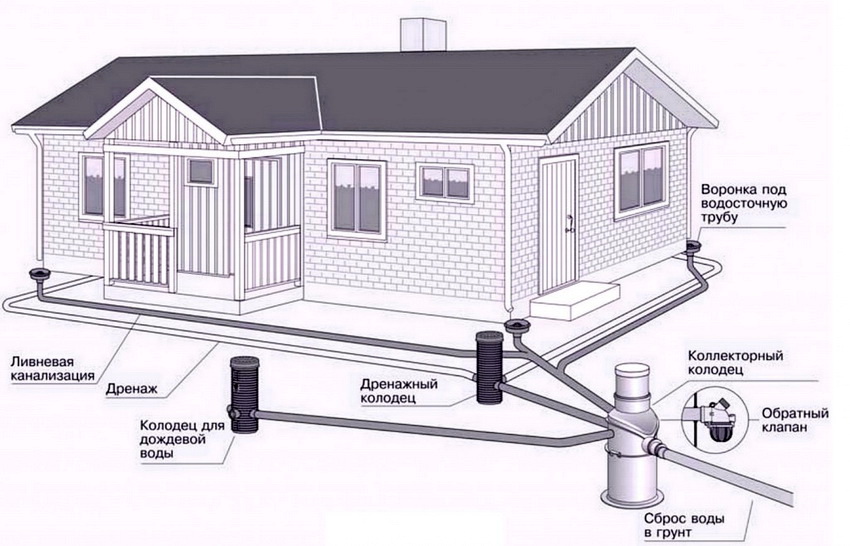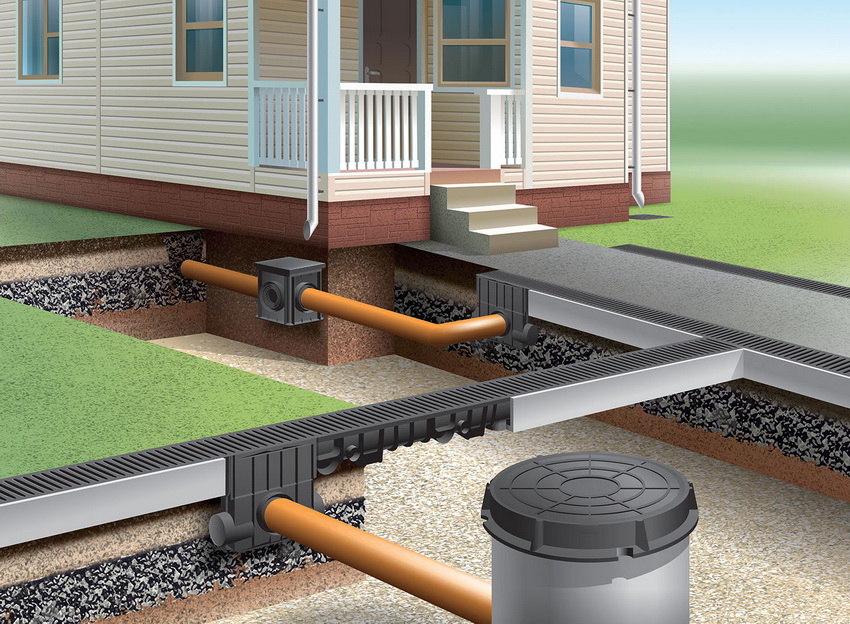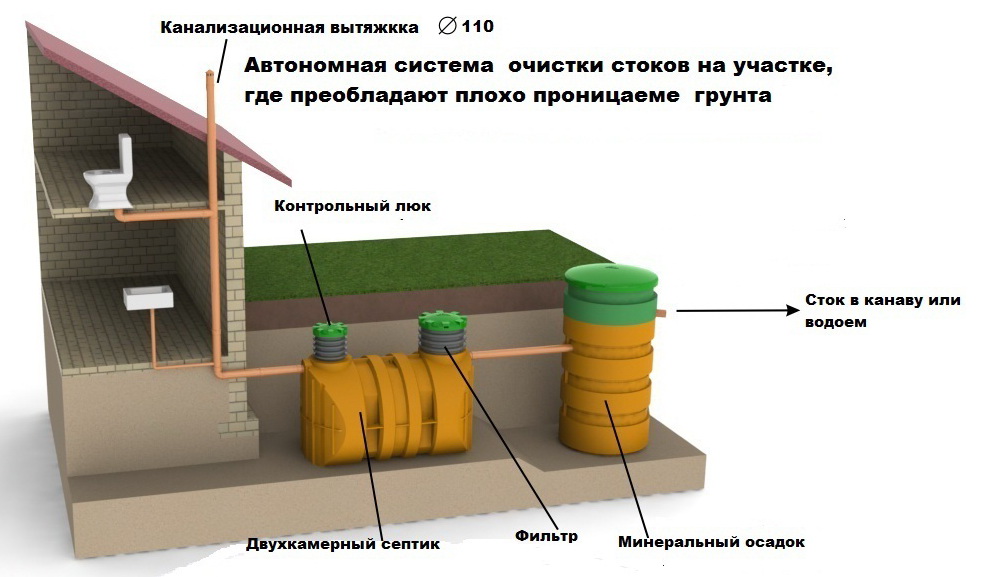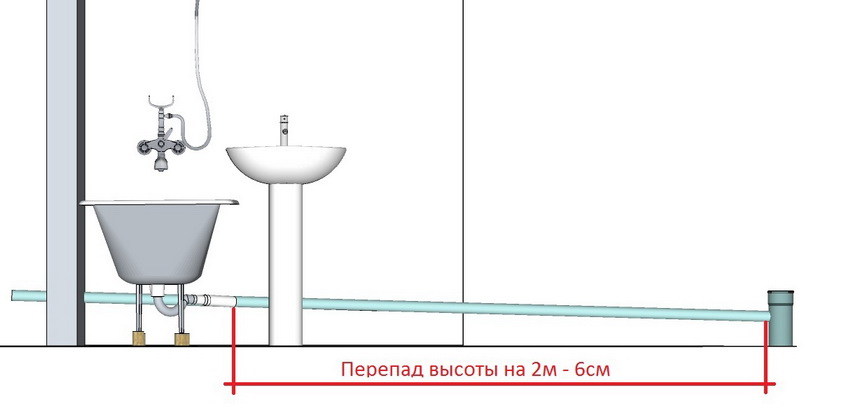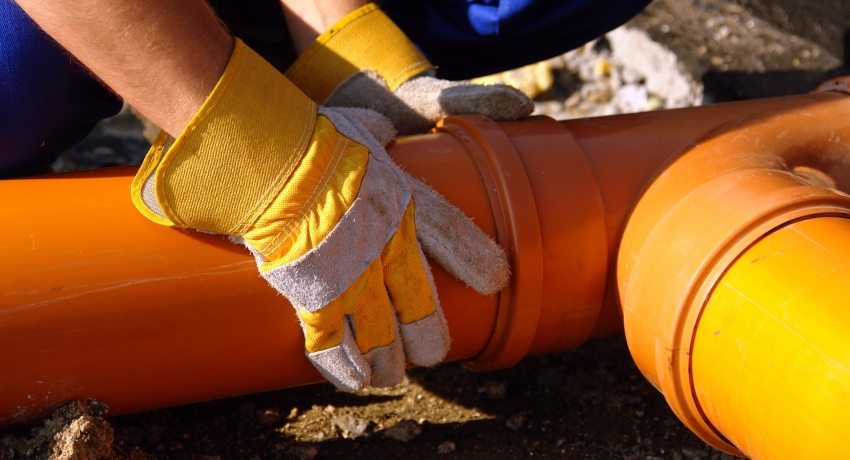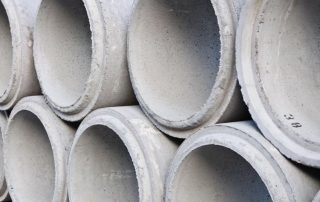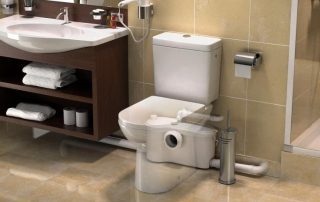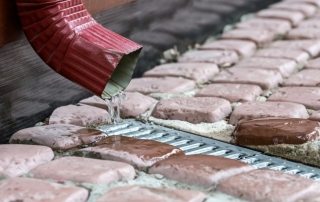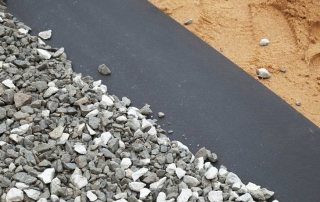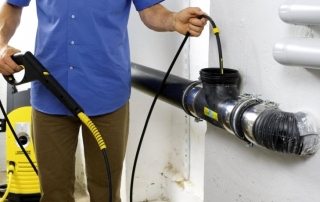This article discusses in detail such a nuance of the installation of the system as the correct slope of the sewage system for 1 meter: SNiP and regulatory requirements that should be adhered to in practice, optimal indicators for certain areas, recommendations for organizing the piping. The text contains an overview of common mistakes and tips to help you avoid them, and formulas that you should rely on when designing a drain line.
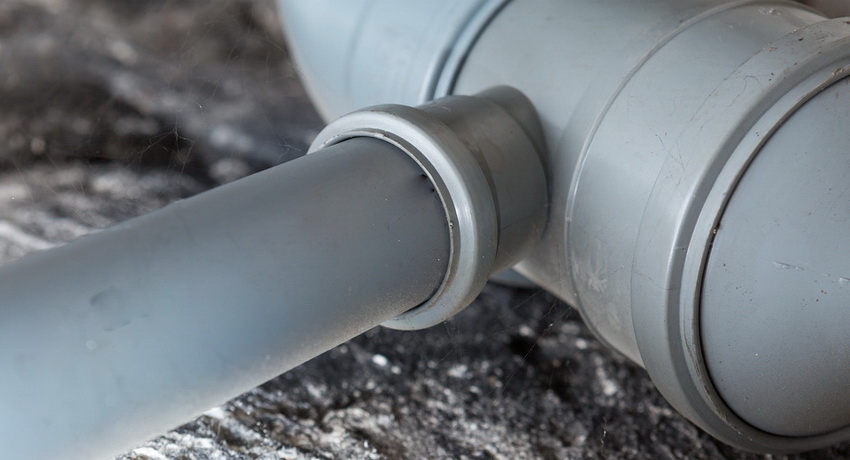
To ensure the correct and uninterrupted operation of the sewage system, when designing the system, it is necessary to comply with the SNiP norms
Content
- 1 Sewerage slope by 1 meter: SNiP and its role in system design
- 2 Organization of water supply and sewerage: SNiP internal network and external
- 3 How to adjust the slope of the sewer in a private house and correctly install the system
- 4 Registration of a test report for internal sewerage and drainage systems
Sewerage slope by 1 meter: SNiP and its role in system design
Comfortable living in a country house is possible only if there is a system designed for the drainage and disposal of household waste. For these purposes, an autonomous type sewage system (centralized for apartments) or a septic structure is used. Inside the system, the movement of the waste liquid through the pipes is carried out in a non-pressure way. In other words, contaminated wastewater is transported to the purification site by gravity. This is facilitated by natural gravity, which is achieved due to the slope of the highway.
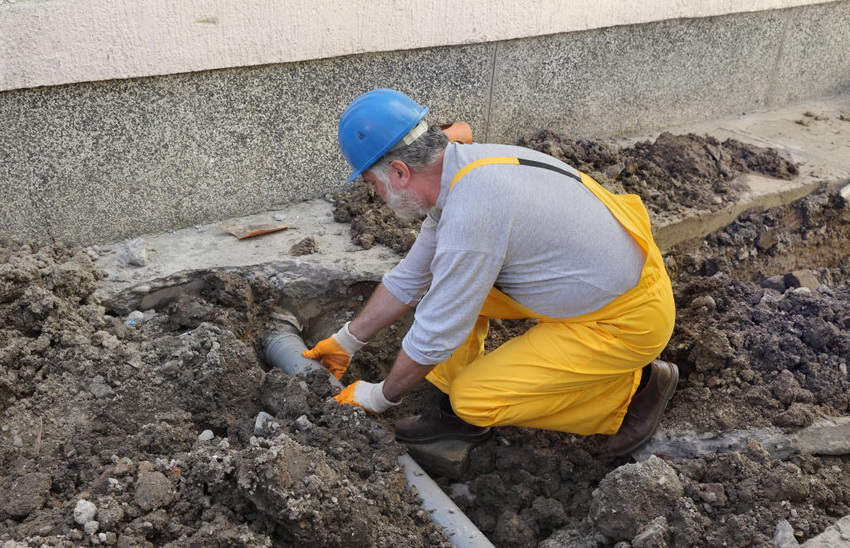
In most sewerage systems, drains are removed by natural gravity, so pipes must be installed with a slope
Important! Natural gravity appears only if the sewer is located at a certain slope. In this case, the system will function normally only if the slope of the sewage system for each meter of the pipeline meets the regulatory requirements of SNiP.
The optimal slope ratio also depends on additional factors:
- diameter of pipeline elements;
- the material from which the pipes are made;
- schemes of external and internal sewerage placement.
Despite the seeming simplicity, as a result of incorrect design of sewage treatment facilities and drainage mains, blockages and plugs can form in the collectors, and the system itself will not be able to fully fulfill its main task.
How to avoid mistakes when installing a sewage system in an apartment with your own hands
When it comes to pipeline slope, it's important not to go to extremes. There are only two types of popular mistakes that inexperienced people make when building a sewer.
In the first case, the slope of the line is absent or it is not enough to move the liquid by gravity. As a result, the flow rate decreases, due to which dense fractions are not washed away, but remain on the inner walls of the pipes. There is a gradual accumulation of sediment, which develops into a blockage.
Partially waste water with impurities of fractions of different density is retained on the walls of the pipeline, as a result of which the pipeline becomes covered with silt and begins to emit unpleasant odors that penetrate back into the room. Therefore, you will have to regularly clean the sewage system in a private house or apartment, where the installation of the system was performed in violation of the requirements.
Excessive tilting of the system can also create the prerequisites for frequent cleaning for preventive purposes. A high flow of liquid at high speed will not be able to capture solid particles from the walls and wash them away. Moreover, in the process of moving water, fecal fractions will be layered and pressed on the walls of the sewer. In this case, all shut-off valves and pipe joints will be subjected to severe stress, which increases the risk of breakage. Therefore, it is very important to adhere to the recommended parameters ascribed in the SNiP documents.
Organization of water supply and sewerage: SNiP internal network and external
First of all, its diameter affects the throughput of a pipe. Therefore, it is recommended to select the angle of the line laying based on the dimensions of the section of its elements. The larger the diameter of the product, the smaller the slope optimal for moving water will be.
The minimum permissible angles of inclination per 1 m of the pipeline, taking into account its section:
| Pipe section, cm | Minimum tilt angle |
| 4 | 0,025 |
| 5 | 0,2 |
| 7,5 | 0,013 |
| 11 | 0,01 |
| 15 | 0,0007 |
| 20 | 0,0008 |
If the pipe diameter is 5 cm, then taking into account the minimum angle (0.02) after the installation of the system, the difference in height between the placement of the ends of a 1 m long section will be 2 cm.
Important! When laying the sewage system in a private house, it is not recommended to install pipes at an angle corresponding to the maximum permissible value.
Calculation of the filling of pipes for the use of SNiP 2.04.01-85 when installing an internal sewage system
Recommended parameters for arranging internal sewerage systems are clearly indicated in SNiP. These data are contained in the regulatory document 2.04.01-85, which can be used as a set of rules and the basis for the construction of a communication system for the discharge of effluents.
The calculation of the pipeline fullness indicator is carried out taking into account the characteristics of the material from which the system elements are made. Based on these data, by calculations, it is possible to find out at what speed the sewage water should move through the sewage system so that there are no blockages inside the line. The filling level is taken into account when choosing pipes for the construction of a discharge system.
For calculations, the following formula applies:
H = V / Dwhere:
- H is the level of fullness;
- B - the level of the height of the drains;
- D - pipe diameter.
The maximum occupancy level is 1. In this case, the slope of the internal sewerage system is completely absent, and the degree of filling the pipe is 100%. The best option for placing the system is 50-60%. At the same time, the material on the basis of which the pipe is made, as well as its angle of placement relative to the local sewage treatment plant - a septic tank, is of considerable importance.
Products made of cast iron or asbestos cement have a rough surface. The texture on the inside of the pipes ensures fast filling.The main purpose of such calculations is to establish the maximum permissible rate in the stock. According to the standard regulations, the minimum speed of movement of the waste fluid is 0.7 m / s. The minimum allowable pipe filling rate is 30%.
Calculation of the speed of movement of sewage in the internal sewage network, SNiP and restrictions
For further calculations for free-flow sewage, the following formula will be required:
V (h / d)½ ≥ Kwhere:
- V is the speed of movement of wastewater inside the system;
- h is the degree of filling the pipe (the level of drains in the product lumen);
- d is the size of the pipe section (diameter);
- K is a coefficient that depends on the roughness of the inner surface of the pipes and their material of manufacture, as well as the hydraulic resistance that affects the flow.
For plastic pipes, the reference factor is 0.5. Other materials correspond to the indicator 0.6. In practice, the consistency of effluents and their quantity are not constant values. Therefore, it is far from always possible to accurately observe the filling of the sewage system and the speed of movement of the water flow.
Useful advice! If it is not possible to perform calculations due to the lack of accurate data according to the previously indicated formula, the minimum angle of inclination can be used to lay areas that cannot be calculated. It can be obtained using the formula: 1 / D, where D is the size of the outer diameter in millimeters.
The optimum diameter of pipes for arranging internal sewerage is 40, 50 and 60 mm. Unlike SNiP, the current set of rules, which was approved in 2012, does not impose restrictions on the maximum angle of inclination of the pipeline. The minimum angle can be found in the table. For a pipe with a cross section of 80 mm, the coefficient is 0.125.
Arrangement of outdoor and storm sewers: SNiP 2.04.03-85 and its requirements
An external sewage system removes waste liquid from plumbing fixtures installed inside a residential building, and also collects rainwater from the site with heavy precipitation due to the storm system. Most often, asbestos-cement and cast-iron pipes are used for the installation of sewers on the site. The use of polyethylene products with a corrugated texture is allowed.
Pipes for the construction of the outer part of the sewer have a large diameter. For their installation, a separate SNiP document is provided with the following requirements:
- if the diameter of the outer pipe does not exceed 150 mm, then the minimum permissible angle of inclination of the line is 0.8 cm for each meter of the system;
- the maximum allowable drainage slope does not exceed 1.5 cm per 1 m of sewage;
- if the diameter of the outer pipe is 200 mm, then the value of the minimum slope of the main line will be 0.7 cm per 1 m of the sewer.
Stormwater inlets for storm sewers installed with a slope of 0.02 cm. Installation of storm sewers is carried out taking into account additional nuances:
- the type and characteristics of the soils on the site;
- the average amount of precipitation typical for the region where the site is located;
- total drainage area;
- places where underground communication systems run.
Note! SNiP allows a decrease in the optimal slope of the stormwater by 2 mm per meter of the system, if the terrain conditions do not allow the installation of the sewage system strictly according to the norms.
How to adjust the slope of the sewer in a private house and correctly install the system
In order for the installation of the sewage system to be performed efficiently, special tools or devices will be required to control the slope of the system.They will allow you to measure the angle of the line placement and correct it if this indicator does not correspond to the norms or calculations.
For these purposes, a bubble-type building level is ideal. Moreover, on both sides of the bubble, three marks should be placed, which fix the deviation from the horizon by 1 cm.
The process of installing the pipeline in the required position is as follows:
- The pipe is being installed with only one end secured.
- The building level must be installed over the fixed side of the element.
- The required slope of the pipe is set, focusing on the level readings.
When the bubble of the building level stops at the desired mark, the pipe should be secured at the other end in the installed position. As a measurement tool, a laser-type building level and level.
Sewerage slope standards in accordance with the type of device and pipe diameter:
| Device type | Distance between riser and siphon (excluding ventilation), m | Drain pipe diameter, mm | Optimal system slope |
| Bidet | 0,7-1 | 30-40 | 1:20 |
| Washing | 1,4 | 30-40 | 1:36 |
| Sink | 0,1-0,8 | 40 | 1:12 |
| Bath | 1,1-1,3 | 40 | 1:30 |
| Shower cubicle | 1,6 | 40 | 1:48 |
| Combined drain (shower, sink, bath) | 1,8-2,3 | 50 | 1:48 |
| Pipe for draining from the riser | — | 100 | — |
| Toilet | no more than 6 | 100 | 1:20 |
| Central riser | — | 65-75 | — |
Designing a sewage system in an apartment and installing it
The internal sewerage scheme of an apartment or a private house should include devices that are sources of drainage. The list of this equipment consists of a toilet, sinks and washbasins, a bathtub or shower stall, as well as household appliances that are connected to the network. The dishwasher and washing machine must be connected to the sewerage system and water supply.
For the construction of internal sewerage systems, it is recommended to use plastic pipes with a diameter of 110 and 50 mm.
SNiP requirements affecting the installation of the sewage complex:
- the slope of the sewage system is selected taking into account the diameter of the central riser pipe, which has already been installed;
- the minimum permissible indicator of the deviation of the sewer pipeline is 3 cm per 1 lm, provided that the diameter of the line does not exceed 50 mm;
- the recommended slope of a pipeline with a cross-sectional area of 1600 mm is 8 mm per 1 m. drain.
Note! The sewerage system in multi-storey buildings is installed in a vertical position. The movement of waste is carried out along the perimeter of the inner walls, while in the center of the flow there is compressed air. This approach reduces the likelihood of sewage clogging.
Recommendations for the installation of an internal sewerage system:
- it is not allowed to turn the pipeline installed horizontally at an angle of 90º, for this it is better to use 45º angled bends;
- the use of right angles in a vertical system is strictly prohibited;
- a slight excess of the slope rate is allowed if the pipe length is small.
It is not recommended to make changes to the system tilt routing types. This is indicated by the requirements of SNiP.
Features of installing an autonomous sewage system at a summer cottage
The external sewerage system is designed to discharge contaminated wastewater towards the septic tank. Autonomous types of fluid transfer systems do not use gravity. The contaminated water is transported to the storage tank by a pump. For these systems, certain SNiP requirements are provided, which specify the maximum distance available for pumping wastewater in this way.
The advantages of autonomous sewers:
- the pressure sewerage pipeline runs at a shallower depth than the mains of other types of systems;
- there is no need for strict observance of the slope standards, since the drains are moved using a pumping station;
- the operation of the system is based on self-cleaning of the inner walls of the pipe, therefore, problems with blockages are extremely rare.
The presence of such advantages does not eliminate the need for verification with SNiP when installing the sewage system. Regulatory documents contain requirements for the optimal placement of a septic tank and other elements on the site in relation to residential buildings, drinking water sources and other facilities. Despite the shallow depth of the pipes, it is imperative to take into account the level of soil freezing in winter.
When working with external sewerage, the relief features of the territory are taken into account. It is recommended to place drainage structures at the lowest points of the site. In this case, the pipe is laid so that the end of the sewer line is not located below the inlet in the septic tank, otherwise the wastewater will not be able to enter the storage tank by gravity.
Registration of a test report for internal sewerage and drainage systems
After the work on the installation of the internal and external sewerage is completed, a test report is drawn up, confirming the functioning of the system and compliance with the standards. This requirement is spelled out in one of the annexes to SNiP 3.05.01-85.
To check the performance of the sewerage system, the pipeline should be spilled. For this, at least 75% of all sanitary equipment that is connected in the area to be checked is started at the same time. If the installation of the sewage system was carried out by the installation organization, you cannot do without such an act.
Data that is entered into the document:
- the name of the system to be checked;
- name of the construction object;
- name of the general contractor, customer and installation organization, including positions and names of representatives;
- information from project documentation (drawing numbers);
- a list of opened by the device at the time of testing and the duration of the test;
- data on the presence or absence of defects;
- the signatures of the inspection commission.
Installation of the sewage system can be done independently or using the services of specialists. In any case, it is important to adhere to regulatory requirements and comply with technology.
Related article:
Sewerage in a private house: scheme, installation depth
Features of the installation of sewerage in a private house and its order. Carrying out the necessary calculations when designing the inner part of the sewage system.
To get a high-quality result, it is recommended to take into account all the nuances: starting with the angle of inclination of the system and designing its scheme, ending with the features of soil subsidence, the correct choice of pipes, accessories, additional equipment. Timely cleaning of the sewage system in combination with the optimal parameters of the line will eliminate the likelihood of a breakdown.
